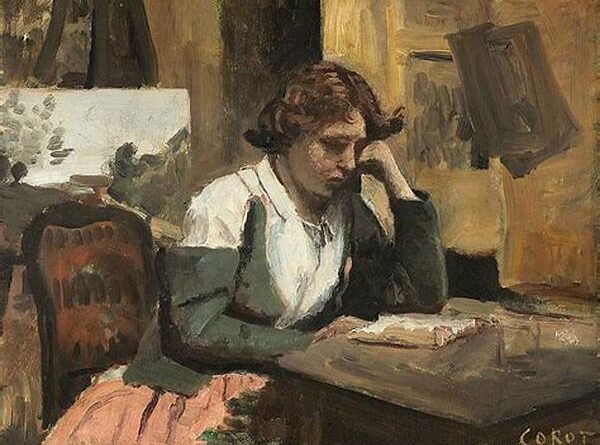Realism Art
Once upon a time, in the heart of 19th-century France, emerged a movement that would shape the world of painting forever. A group of artists, weary of fanciful clichés and the grandiose romanticism that filled the salons and galleries, yearned to represent life as it truly was. They cast aside the mythical and the monumental, choosing instead to celebrate the common man and the raw beauty of everyday existence. This bold rebellion against traditional art heralded the dawn of realism art.
Read Now : Artist Brand Development Techniques
The Dawn of Realism Art
The birth of realism art can be likened to a revolution. It was Gustave Courbet, standing in a dimly-lit Parisian studio, who boldly declared that art should represent real life, not idealized images. He took a brush and painted “The Stone Breakers,” capturing the weariness in the laborers’ faces and the grit under their nails. With every stroke, Courbet grounded art firmly on Earth, centering on the real and the tangible. Across the continent, artists like Jean-François Millet and Honoré Daumier joined his cause, painting scenes of peasant life and urban realism. Impressionism took notice, and soon, the once-muted voice of the everyday was part of art’s loudest conversation. Realism art was more than a style; it was a statement – a vivid narrative of the authentic human experience.
The Essence of Realism Art
1. Honest Portrayal: Realism art is about depicting subjects without embellishment, much like a truthful storyteller recounting a tale with candor.
2. Common Life: It draws inspiration from everyday events, elevating the mundane into something worthy of artistic capture.
3. Visual Truth: Realism art is akin to a mirror held up to society, reflecting everything, warts and all, without alteration.
4. Emotion in Detail: Each brushstroke of realism art captures intricate details, immersing viewers in the scene’s emotional depth.
5. Subtle Storytelling: Through realism art, every nuance of daily life becomes a narrative, echoing stories that resonate with authenticity.
The Impact of Realism Art
Foremost among the achievements of realism art was its challenge to prevailing artistic norms. Realism art punctured the fantasy bubble that had long shielded bourgeois sensibilities. Instead of dreamscapes, the audience was introduced to the aching back of a farmer sowing his field, to the bustling market scenes filled with cacophony and vitality. These are stories the canvases would tell if they could speak—tales not of heroes on grand adventures, but of humanity itself on its daily toils. This shift in focus was radical. Suddenly, considering the lives of the downtrodden and the drudgery of everyday existence became an act of social commentary, urging viewers to notice the forgotten textures of life.
Read Now : Interactive Museums In Digital Spaces
Realism art transcended the canvas, influencing literature, theater, and eventually photography. Writers like Charles Dickens and Émile Zola adopted reality’s relentless scrutiny, crafting narratives that mirrored societal concerns. Theatre, too, embraced this stark honesty, moving audiences with depictions of authentic tales. Even nascent photography found its calling in realism, capturing unembellished snippets of existence. Though the colors of romanticism would eb and flow back into vogue, the indelible mark of realism art would remain, forever shaping art’s approach to truth.
Celebrated Figures in Realism Art
Gustave Courbet: Pioneering Realism Art
Gustave Courbet sits at the helm of realism art’s storied journey. His approach to art, a nod to raw, unfiltered life, challenged the perceptions confined within tenets of the sublime. Courbet rejected the refinements imposed by romanticism, painting scenes drawn directly from personal observation. He captured the unpolished reality of rural laborers and simple landscapes, which resonated with truth. Courbet often remarked, “I cannot paint an angel because I have never seen one,” embodying his dedication to the physical world that realism art revels in. His work laid a foundation, so unwavering, that paved the path for those who followed.
Honoré Daumier: The Social Critic of Realism Art
In the spirited realm of 19th-century France, Honoré Daumier carved his niche, blending satire with vivid realism art. He wielded his brush like a weapon, critiquing politics and society with acute observation and a droll touch. Through his realist paintings and lithographs, Daumier depicted bustling urban life and trenchant social commentary. His keen eye and sharp wit gave voice to a generation, and the struggles of the common man came to vivid life through his relentlessly honest art. His legacy endures as a testament to the power of realism art’s storytelling prowess.
The Legacy of Realism Art
As one unfolds the chronicles of realism art, it’s clear that this movement does more than reflect a canvas of accurate visual representation. It opens a window into an era – exposing the soul of society, the pulse of the working man, the quiet dignity of the overlooked. Realism art invites audiences to pause and ponder, to step beyond the gilded frames into the reality behind them. It transcends mere aesthetics, serving as a catalyst for empathy and understanding in its undiluted narrative of life’s tapestry. Through realism art, the extraordinary lurks within the ordinary, awaiting discovery by those willing to truly see.
